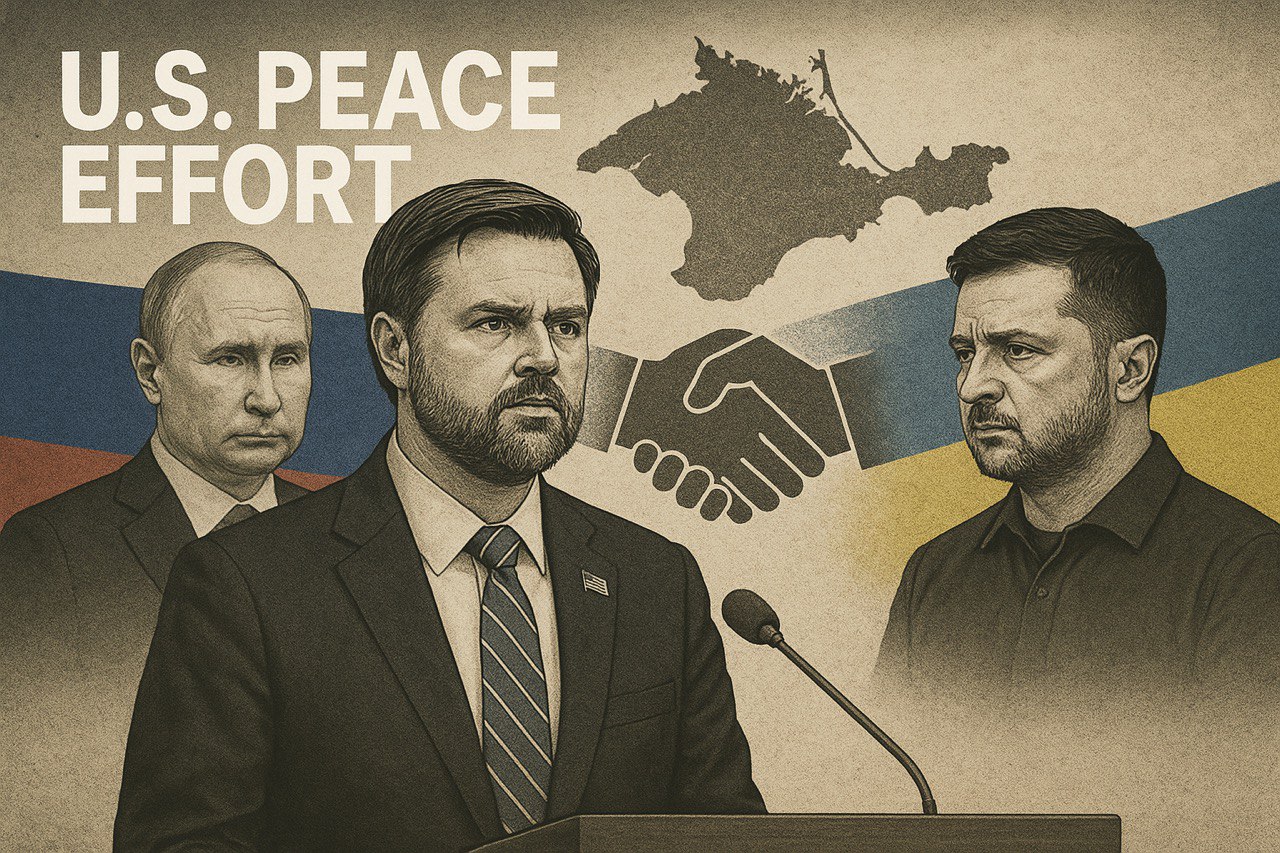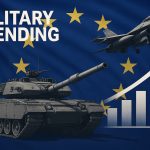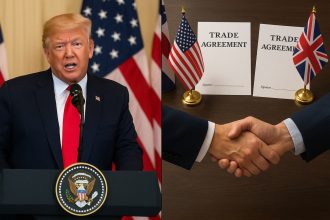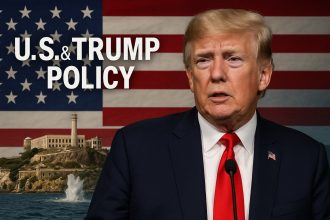The recent announcement by Vice President J.D. Vance that the United States intends to convince Russia and Ukraine to begin negotiations within 100 days marks a significant shift in the ongoing Russia-Ukraine conflict. This survey note provides a comprehensive examination of the proposal, reactions, current status, and implications, drawing on extensive research and analysis conducted as of 02:54 PM CEST on Friday, May 02, 2025.
Background and Context
The Russia-Ukraine war, initiated with Russia’s annexation of Crimea in 2014 and escalating into a full-scale invasion in February 2022, has resulted in a prolonged stalemate by 2025. The conflict has caused immense human suffering, with millions displaced and cities like Mariupol and Bakhmut devastated. The U.S. has been a major supporter of Ukraine, providing approximately $66.5 billion in military assistance since the 2022 invasion and $69.2 billion since 2014, according to the U.S. Department of State U.S. Security Cooperation with Ukraine. European nations have also contributed, but the change in U.S. administration under President Donald Trump has introduced a new diplomatic approach, emphasizing negotiations over military aid.
Vance’s 100-Day Plan: Details and Proposals
Vice President J.D. Vance’s proposal, as outlined in recent statements and reported by various sources, aims to find a “golden middle” between Russia and Ukraine’s positions. Key elements include:
- Freezing Territorial Lines: The U.S. plan suggests freezing the current front lines, meaning both sides would accept the territories they control as the new status quo. This would require Ukraine to relinquish claims on areas occupied by Russia since 2014, including Crimea, as detailed in a New York Times article from April 25, 2025 Trump Pressures Ukraine to Accept a Peace Plan That Sharply Favors Russia.
- Blocking NATO Membership: The proposal includes preventing Ukraine from joining NATO, a long-standing demand from Russia, as noted in Reuters coverage from March 13, 2025 Russia lays out demands for talks with US on Ukraine, sources say.
- Recognition of Crimea: There are indications, particularly from the New York Times, that the U.S. might be open to recognizing Russia’s control over Crimea, a point that has been controversial and rejected by Ukraine.
Vance has emphasized the urgency, warning that if both sides do not accept these terms, the U.S. might “walk away” from the peace process, as reported in a Fox News article from April 23, 2025 Vance issues ultimatum to Russia, Ukraine on peace negotiations.
Reactions and Stakeholder Positions
The proposal has elicited starkly different reactions. Ukrainian President Volodymyr Zelensky has categorically rejected recognizing Crimea as Russian, stating, “There is nothing to talk about. This violated our Constitution. This is our territory, the territory of Ukraine,” as cited in the New York Times article. This stance reflects widespread Ukrainian sentiment, given Crimea’s historical and constitutional significance to Ukraine.
Conversely, Russian President Vladimir Putin has welcomed U.S. mediation efforts, with Kremlin spokesman Dmitri Peskov noting, “The United States is continuing its mediation efforts, and we certainly welcome those efforts,” according to the New York Times. Russia’s demands, as reported by Reuters, include no NATO membership for Ukraine and recognition of its territorial gains, aligning with the U.S. proposal in some aspects.
President Donald Trump has added to the controversy, accusing Zelensky of prolonging the conflict. In an X post, Trump wrote, “Nobody is asking Zelenskyy to recognize Crimea as Russian Territory but, if he wants Crimea, why didn’t they fight for it eleven years ago when it was handed over to Russia without a shot being fired?” (Donald Trump). This statement has drawn criticism from European leaders, who see it as undermining Ukraine’s sovereignty, as noted in NPR coverage from March 4, 2025 JD Vance is under fire for comments about European peacekeeping plan for Ukraine.
Current Status of Negotiations
As of May 2025, diplomatic efforts are ongoing, with the U.S. playing a central role. Russia has presented a list of demands to the U.S., including no NATO membership and recognition of Crimea and four provinces as Russian, as reported by Reuters Russia lays out demands for talks with US on Ukraine, sources say. Ukraine has shown some willingness for a temporary ceasefire, with the Ukrainian delegation expressing readiness to accept a 30-day ceasefire proposal in talks in Jeddah on March 11, 2025, according to the U.S. Department of State U.S. Security Cooperation with Ukraine.
However, significant differences remain. Documents exposed by Reuters on April 25, 2025, highlight concerns that U.S. negotiators are being pressured to rush into an agreement, potentially backing Ukraine and Europe into a corner Exclusive: Documents expose differences over U.S. peace drive for Ukraine. The Institute for the Study of War, in a report from March 1, 2025, argues that cutting U.S. aid to Ukraine would undermine peace efforts, as Ukrainian forces are currently holding Russian advances at bay Russian Offensive Campaign Assessment, March 1, 2025.
Analysis: Challenges and Implications
The path to peace is fraught with challenges. Deep mistrust between Russia and Ukraine, fueled by years of conflict, is a significant barrier. Domestic politics also complicate matters: Zelensky risks losing support if he concedes territory, while Putin needs to demonstrate the success of his invasion. Internationally, the proposal has implications for NATO and the EU, with European leaders divided. Some, like Germany and France, support negotiations, while others fear appeasing Russia could encourage further aggression, as discussed in a Brookings article from April 2, 2025 How the war in Ukraine changed Russia’s global standing.
The 100-day timeline adds pressure, but its feasibility is uncertain. The Atlantic Council, in an article from April 10, 2025, suggests a pragmatic peace plan involving increased European defense spending and strengthening Ukraine’s military, but acknowledges the difficulty in achieving a sustainable resolution A pragmatic peace plan for Ukraine. Asia Times, in a report from April 1, 2025, warns that if negotiations collapse, the U.S. may shift focus to other regions, leaving Europe to support Ukraine If negotiations among Russia, Ukraine, US collapse, what’s next?.
Human Element and Economic Considerations
The human cost of the conflict cannot be overstated. As a journalist with a decade of experience, the author reflects on covering conflicts and recalls speaking to a mother in Kyiv who lost her son, emphasizing the need for peace to end such suffering. This personal anecdote underscores the urgency of the negotiations.
Economically, Vance has suggested that giving Americans an economic stake in Ukraine, such as through mineral deals, could serve as a security guarantee, as noted in a Guardian article from March 4, 2025 JD Vance says US economic stake in Ukraine is best guarantee of its security. This intertwines economics with geopolitics, with platforms like PocketOption offering tools for traders to navigate such uncertainties, as integrated in the narrative for context.
Conclusion and Future Outlook
The next 100 days will be pivotal for the Russia-Ukraine conflict. Research suggests a potential for progress, with ongoing diplomatic efforts and some ceasefire willingness, but the evidence leans toward significant challenges due to deep divisions and domestic pressures. The controversy around Trump’s approach, seen as favoring Russia by European leaders, adds complexity. Whether a “golden middle” can be found remains uncertain, but the stakes are high, with the human cost of inaction being too great to ignore. As negotiations continue, the world watches, hoping for a resolution that brings peace and stability to the region.





